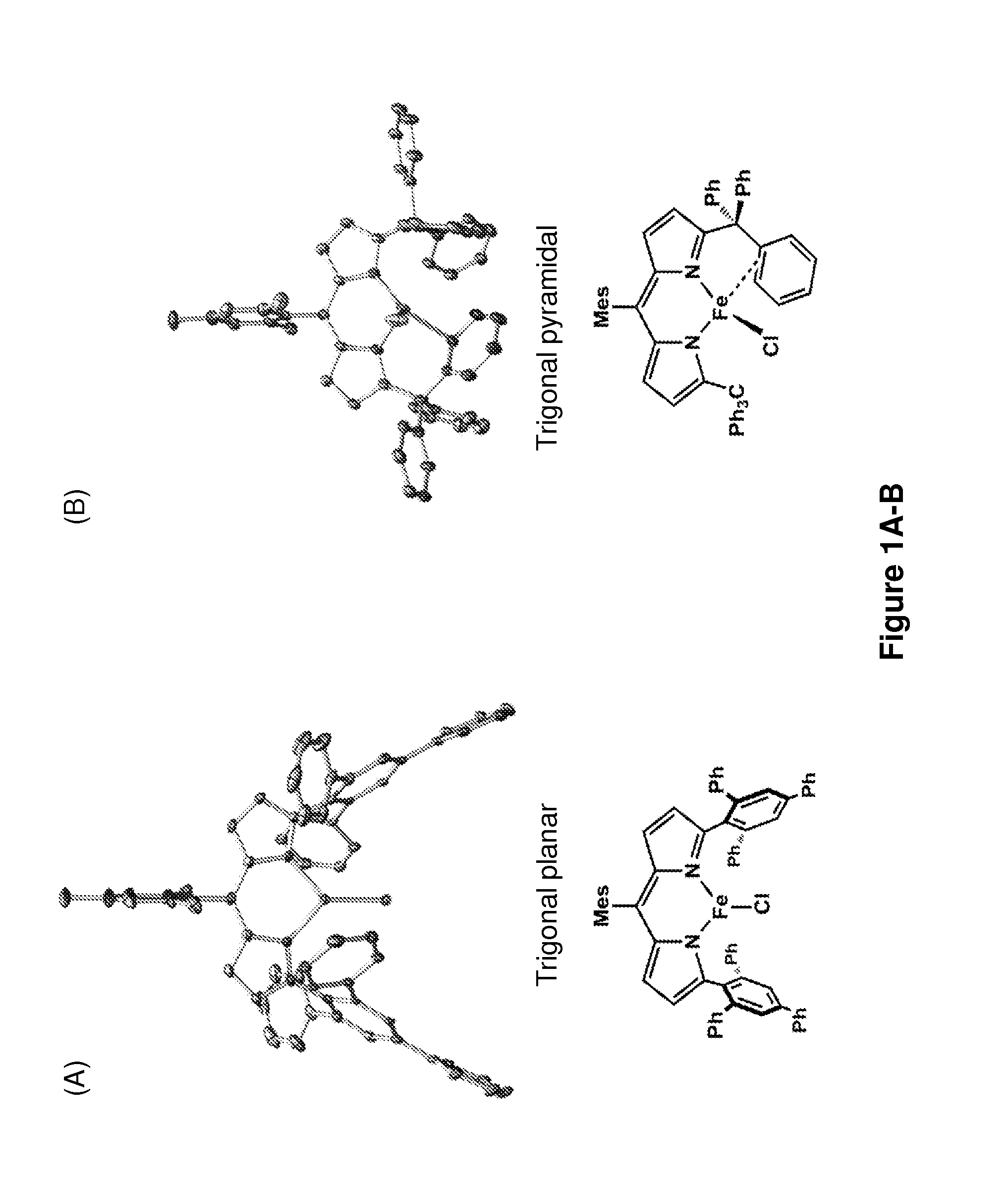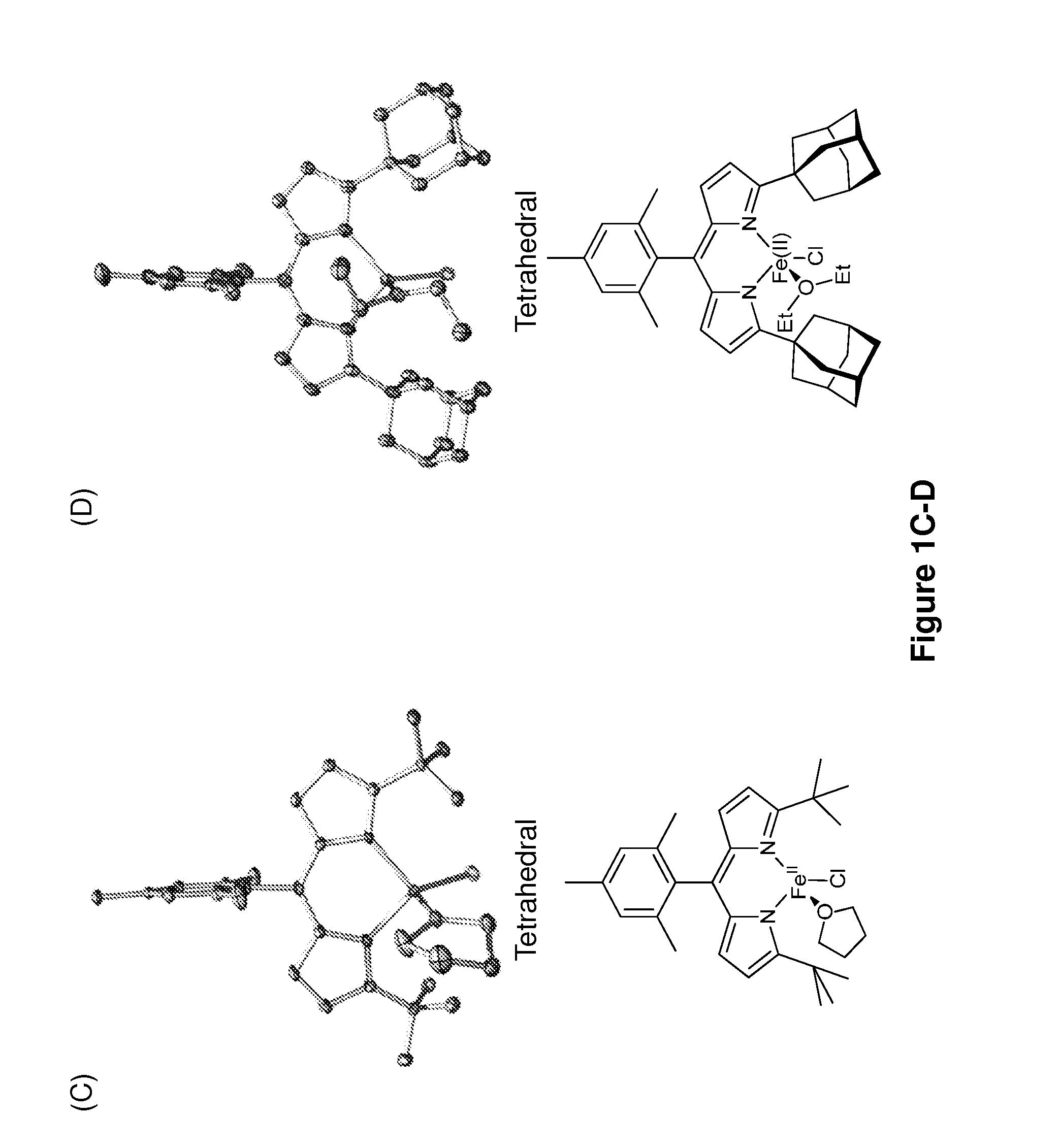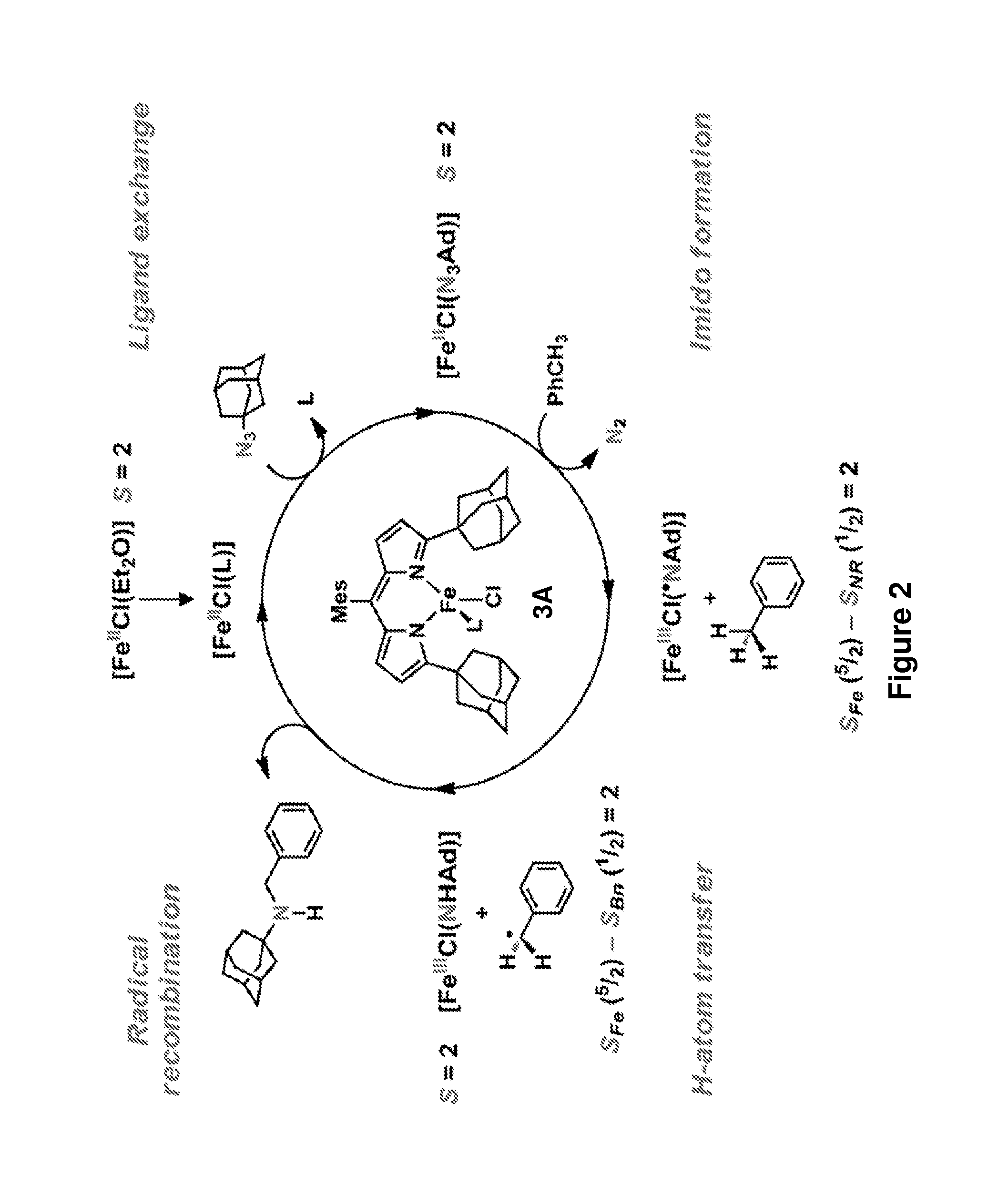Synthesis of acyclic and cyclic amines using iron-catalyzed nitrene group transfer
a technology of cyclic amines and synthesis protocols, which is applied in the direction of organic compounds/hydrides/coordination complexes, physical/chemical process catalysts, iron organic compounds, etc., can solve the problems inefficient synthetic protocols, and lack of generality for bond construction, etc., to achieve the effect of poor atom economy and waste generation
- Summary
- Abstract
- Description
- Claims
- Application Information
AI Technical Summary
Benefits of technology
Problems solved by technology
Method used
Image
Examples
examples
[0193]In order that the invention described herein may be more fully understood, the following examples are set forth. These examples are for illustrative purposes only and are not to be construed as limiting this invention in any manner.
Preparation of the Iron-Based Catalysts
[0194]The iron-based catalysts described herein that are useful in the inventive methods (e.g., a ferrous compound of Formula (B) or (G), or a salt thereof, such as compounds 3A and 3B) may be synthesized according to reported processes, such as ones described in King et al., J. Am. Chem. Soc. 133, 4917 (2011), which is incorporated herein by reference.
Preparation of Acyclic Secondary Amines
[0195]Acyclic secondary amines (e.g., compounds 25A-25D) may be synthesized according to the general method shown in Scheme 4 through a reaction of an azide (e.g., RAN3) with an substituted or unsubstituted, branched or unbranched, cyclic or acyclic olefin (e.g., compounds 26A-26C) catalyzed by a compound of Formula (B) or (...
PUM
 Login to View More
Login to View More Abstract
Description
Claims
Application Information
 Login to View More
Login to View More - R&D
- Intellectual Property
- Life Sciences
- Materials
- Tech Scout
- Unparalleled Data Quality
- Higher Quality Content
- 60% Fewer Hallucinations
Browse by: Latest US Patents, China's latest patents, Technical Efficacy Thesaurus, Application Domain, Technology Topic, Popular Technical Reports.
© 2025 PatSnap. All rights reserved.Legal|Privacy policy|Modern Slavery Act Transparency Statement|Sitemap|About US| Contact US: help@patsnap.com



